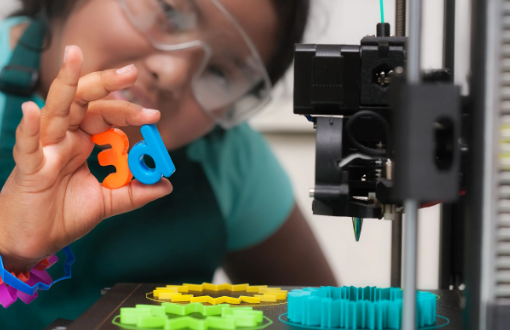Benefits of 3D Printers in Education

In recent years, 3D printing technology has emerged as a powerful tool in the field of education, ushering in a new era of interactive and experiential learning. From elementary schools to universities, educators are harnessing the power of 3D printers to engage students, foster creativity, and prepare them for the challenges of the future. In this article, we’ll explore the diverse benefits 3D printers bring to education.
1. Enhanced Learning Experience
One of the primary advantages of 3D printers in education is the enhancement of the learning experience. Students can turn abstract concepts into tangible, three-dimensional objects. This hands-on approach helps reinforce understanding and retention of complex topics in subjects ranging from science and mathematics to history and art. When students can see and touch what they are learning, it becomes real, making it easier to grasp.
2. Encourages Creativity and Problem Solving
3D printing encourages students to think critically, solve problems, and unleash their creativity. When faced with a design challenge, students must brainstorm, iterate, and refine their ideas. This iterative process fosters essential problem-solving skills that are applicable in various aspects of life. Whether designing a new gadget or solving a real-world issue, creativity and critical thinking are invaluable skills.
3. Bridging the Gap Between Theory and Practice
The 3d printer bridges the gap between theoretical knowledge and practical application. Students can design and produce prototypes, models, and functional objects, allowing them to see the real-world implications of what they learn in the classroom. For example, in physics, students can design and print a working catapult, bringing the principles of motion and force to life.

4. Customization and Personalization
3D printing enables customization and personalization of educational materials. Teachers can create tailored teaching aids, such as anatomical models, historical artifacts, or interactive puzzles, to meet the specific needs of their students. This individualized approach accommodates diverse learning styles, ensuring that every student has access to the best possible learning experience.
5. STEM Education Advancement
In STEM (Science, Technology, Engineering, and Mathematics) education, 3D printers are invaluable tools. They facilitate hands-on experimentation and engineering projects. Students can design and print their prototypes, enabling them to explore scientific principles and engineering concepts in a practical context. This not only deepens their understanding but also inspires a passion for STEM fields.
6. Preparing for Future Careers
Introducing 3D printing technology in education prepares students for future careers in various fields. Proficiency in 3D design and printing is increasingly in demand in industries such as engineering, healthcare, architecture, and manufacturing. When students graduate with these skills, they are better equipped to excel in a rapidly evolving job market.
7. Access to Cutting-Edge Technology
Having access to 3D printers gives students exposure to cutting-edge technology. They learn to navigate 3D modeling software, which is a valuable skill in today’s digital world. This familiarity with technology equips them with a competitive edge in the job market. They become adept at using digital tools that are widely used in industries and research.
8. Collaboration and Teamwork
Many educational 3D printing projects require collaboration and teamwork. Students often work in groups to design and build complex projects. This collaborative approach not only enhances their interpersonal skills but also mirrors real-world work dynamics. Learning how to communicate effectively, share ideas, and work together is a vital skill that will serve students well in their future careers.
Conclusion
Overall, 3D printers are transforming education by enhancing learning experiences, fostering creativity and problem-solving, bridging theory and practice, and preparing students for the demands of the job market. Moreover, they promote customization, individualization, and inclusivity in education, ensuring that every student has the opportunity to excel. As technology continues to advance, 3D printing will play an increasingly pivotal role in shaping the future of education.




























